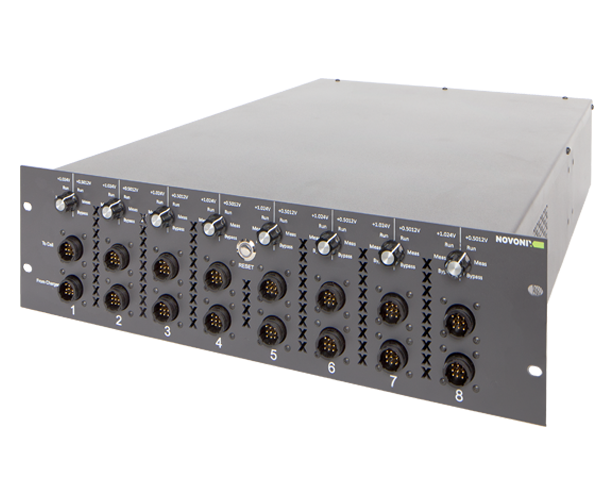COULOMBIC EFFICIENCY TESTING
Precise measurement of coulombic efficiency, aiding battery R&D by assessing long-term performance in short-term experiments. Ador Digatron offers high-precision cycler systems with less than 10 ppm precision and 50 ppm accuracy.
COULOMBIC EFFICIENCY TESTING
Due to the long lifetime demanded of sustainable technologies, high accuracy, high precision testing is needed to enable reliable predictions of the lifetime of batteries within a short period of time. It is critical when evaluating cells to have high precision and high accuracy to enable measurements that are reliable and repeatable.
The method of high precision coulometry was first introduced to the scientific community by Dr. Jeff Dahn’s lab at Dalhousie University in 2010. Novonix’s founding members have been involved in this project since inception and have a thorough understanding of the requirements of the equipment, benefits of the technique and analysis of the data. At the time, there were no commercially available systems that met the specifications to make meaningful measurements of the coulombic efficiency of cells to the level of accuracy needed to reliably compare high performance cells. Therefore, custom equipment was built in the lab to meet these requirements.
Precise measurements of the coulombic efficiency of a cell using the proper equipment has been shown to have enormous benefits to battery R&D projects, allowing researchers to characterize lifetime and evaluate the impact of small changes to battery design on long-term performance in short-term experiments. With this expertise, Novonix was established to develop battery testing systems specifically catered to precision measurements of coulombic efficiency. As companies develop better cell technologies, the use of high precision cycler systems allows for comparison measurements of cell performance in only a few weeks, instead of months or years of long term cycling. Novonix’s high precision cycler systems have been shown to measure the coulombic efficiency of cells to typically less than 10 ppm precision and 50 ppm accuracy. Novonix offers both testing services and equipment sales to help customers get the most out of their use of high precision coulometry techniques.

Comparison of short term coulombic efficiency (CE) measurements with long term cycling results.
Figure 1 shows how short term coulombic efficiency (CE) measurements can correlate to long term performance. The short term CE measurements take approximately one month and can accurately predict the failure of the same cells undergoing long term cycling.
The first generation Novonix High Precision Cycler was benchmarked against Dr. Jeff Dahn’s “Ultra-High Precision Charger” systems to ensure equivalent performance.
Comparison of the CE data collected from Novonix's high precision cycler system and the "UHPC" at Dalhousie University.
Figure 2 shows data collected by Dr. Dahn’s group at Dalhousie University comparing the performance of identical cells on the Dahn system and the Novonix system. Both systems show coulombic efficiency measurements with an accuracy better than 40 ppm and low noise.
Many recent journal publications from Dr. Dahn’s and other’s research groups have been centered around the use of High Precision Coulometry as a tool in evaluating lifetime performance of Li-ion cells and evaluating the impact of electrolyte additives in short-term experiments that accurately represent the long-term performance.




Enquire Now
“Please complete the form so our team can assist you with the final product.”

